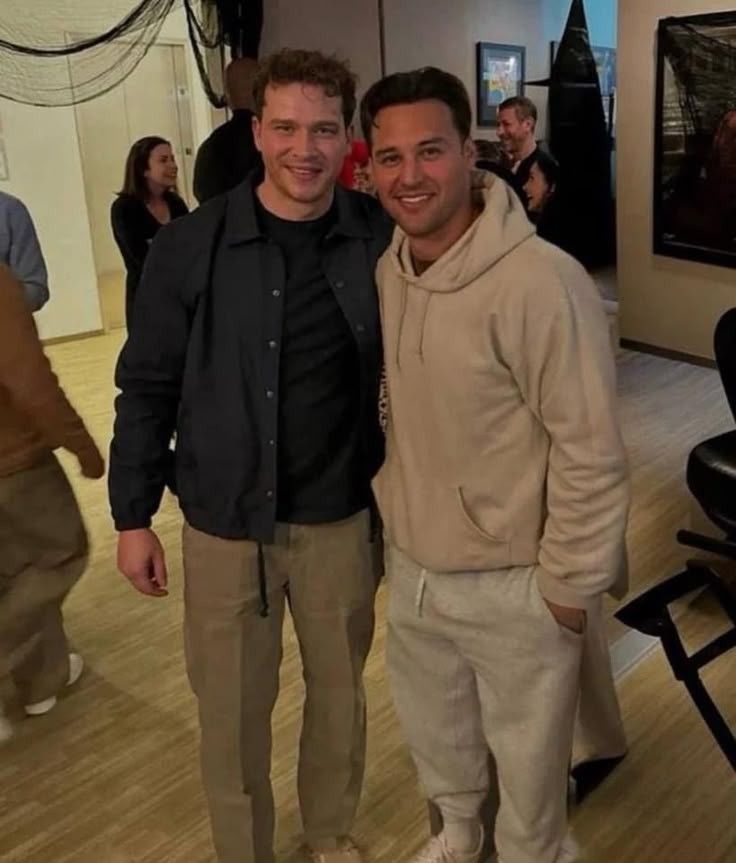
You thought Bobby vanished. You missed the quiet, terrifying truth: he was alive—hidden inside a secret medical facility, asleep in a coma, slowly recovering from a virus nobody wanted anyone to know about. Then, in a single heartbeat of startled clarity, he wakes up, chooses freedom over safety, slips through corridors designed to trap, and sets his feet toward home. This article breaks down that missed scene into emotional beats, cinematic moments, and practical storytelling tips so the reveal hits like it should.
Bobby’s Condition: The Coma and the Virus
Bobby’s coma isn’t just a plot device — it’s the emotional anchor. He’s not permanently gone; he’s unreachable, somewhere clinical and cold. The virus is the reason for secrecy: a pandemic strain, experimental therapy, or a misdiagnosis that made people in power act first and explain later. The truth? Coma patients can recover unexpectedly. That ambiguity fuels drama.
The Secret Medical Facility — Setting the Stage
Imagine fluorescent lights that never dim, hallways that smell faintly of antiseptic, and rooms with observation windows that make privacy a joke. This facility is designed for containment, not care. It is the kind of place people whisper about and then pretend doesn’t exist.
Why They Hid Him
Why hide Bobby? Maybe he was patient zero. Maybe he knows something about the virus or the cure. Or maybe hiding him served someone’s PR or legal needs. Whatever the reason, secrecy multiplies stakes: family panic, conspiratorial rumors, and the moral rot of institutions that choose control over compassion.
Waking Up: The Moment That Changes Everything
The awakening must be intimate, focused, and sensory. This is the pivot: Bobby’s eyes flutter open, the machines hum, the world rearranges itself around a single conscious man. Waking scenes can easily feel clinical — don’t let it. Make it messy. Make it human.
Sensory Details — Coming Back to Consciousness
He tastes copper on his tongue. A fluorescent buzz fills his ears like a distant swarm. He can’t move his legs at first, but his fingers twitch — a tiny rebellion. Sensory detail grounds the reader. Use touch, taste, smell, and tiny physical truths to make the wake-up real.
First Decisions — Instinct Over Instruction
Coma patients don’t read memos; they act on instinct. Bobby doesn’t call for a nurse. He tests his limbs. He listens. There’s a small moment — a smell of frying oil, a laugh echoing far away — and he realizes what he wants is home. That’s when the scene stops being medical and starts being human.
Escape: Quiet, Clever, Desperate
An escape from a medical facility is not a Hollywood sprint with laser grids; it’s a chess match. It requires observation, restraint, and small acts of cunning. Bobby’s escape should feel possible, not miraculous. He uses his surroundings and his wits.
The Tools He Uses
A loose vent cover. A misfiled clipboard. A janitor’s cart. Bobby uses things that exist in the margins. He moves when shifts change, when the monitors blink, when fridge doors at the staff kitchen open. Make the escape tactile and believable.
A Moment of Panic
No escape is smooth. The reader should feel that heart-in-throat panic — a footstep where there shouldn’t be one, a gloved hand pausing at a doorway, a light that clicks on at the worst possible second. Panic makes the relief when he slips through that much sweeter.
Blending In: Moving Through the Facility
Bobby isn’t a trained operative; he’s awkward and lucky. He borrows a janitor’s jacket, keeps his head down, hums under his breath. He observes staff habits, learns the rhythm of the building, and times his moves precisely. That’s more believable than improbable stealth.
The Journey Home: Alone Against the World
Once he’s out, the outside world isn’t exactly hospitable. Streets might be empty, checkpoints may exist, and the virus still looms like a shadow. The journey home becomes both physical pilgrimage and emotional suture.
The Physical Challenges
Weak muscles, a patched-up wound, and the cognitive fog of convalescence make travel risky. Bobby stumbles, rests, and sometimes nearly collapses on park benches. Showing his physical limits makes his determination more heroic.
The Emotional Map — Memory and Motivation
What brings him home? A memory of his daughter’s laugh, the smell of his wife’s cooking, a dog that would jump up on him. These human details are the north star. They justify his risk and pull the reader forward.
Reunion: Finding Family in a Changed World
Reunion scenes are a test of restraint. You can’t just have everyone burst into tears and call it done. A real reunion is layered — disbelief, slow recognition, guarded joy, and an awkwardness that only family can manufacture.
Small Details That Make Reunions True
A cut on his forehead that his kid recognizes; a favorite phrase his wife mutters when she’s shocked; a dog that won’t leave his side. These small markers create authenticity.
Storytelling Tips: How to Make This Scene Work on Page and Screen
If you’re writing this scene, whether for a blog, novel, or screenplay, remember: readers and viewers need sensory anchors, believable logistics, and emotional truth. Don’t gloss over logistics in favor of melodrama.
Pacing and Tension
Alternate narrow, tense moments (the escape) with wider, reflective ones (the journey). Quick cuts and short sentences speed panic; long sentences and paragraphs allow breath. Mix them.
Language and Sensory Hooks
Use verbs that act: “he slips,” “he squeezes,” “he tastes.” Avoid “to be” heaviness — active voice keeps things alive. Hook the reader with a smell, a sound, or a single tactile detail as an anchor.
Avoiding Clichés
Don’t default to obvious beats. Instead of an ambulance siren signaling rescue, use a broken vending machine or a child’s bicycle bell. Surprise your reader with the ordinary.
Themes and Symbolism
This plotline bristles with themes that deepen the scene: identity after trauma, the fragility of memory, institutional secrecy, and the meaning of home.
Identity, Memory, and Home
Bobby’s coma erases time but not identity. His journey home asks: what parts of us survive illness? How do we reintroduce ourselves to people who mourned us? These are the emotional questions that make the scene linger.
Why This Twist Resonates With Audiences
Why do we love “he’s not dead, he’s missing” stories? Because they give us hope — a belief that people can return from the worst. The secrecy element adds tension, and the escape adds agency. People root for reunions because they’re essentially stories about forgiveness and resilience.
How to Write Dialogue That Rings True in This Scene
Dialogue should be sparse and specific. When Bobby speaks, his sentences might be short — cognitive fog leaves him succinct. Family members might talk around the big feelings, use humor to mask fear, or ask practical questions that hurt more than a sob.
Sample Exchange (Short & Real)
“Bobby?” she says, half laugh, half question.
He looks at her, fingers trembling. “I— I’m sorry.”
The dog barks. Nobody tells him to get up. Nobody needs to.
Visual Opportunities: How a Director Could Stage It
On screen, the awakening can be shot in close-up, with breathing as a metronome. The escape should use shallow depth of field and sound design — the hum of vents, the click of heels, the distant cough of a ward. The reunion can expand the frame to include the setting: a cramped kitchen, a porch light, a child’s bicycle leaning against a fence.
Emotional Payoff: Why Small Moments Matter
It’s the small, human details that make audiences cry: a chipped mug, a lullaby hummed off-key, a hand that remembers how to braid hair. The whole arc — from hidden coma to homecoming — earns tears through tiny, specific beats.

Practical Plausibility: Making the Impossible Feel Real
Readers will forgive a lot if the rules of your world stay consistent. If security is lax once, don’t suddenly make it omnipresent. If Bobby shows an unusual talent, hint at it earlier. Plant breadcrumbs.
Medical Realities (A Few Quick Notes)
Coma recovery can vary wildly. Post-viral fatigue is real. Don’t claim medical certainties; instead focus on emotional truth. If you need details, consult medical sources when polishing your draft.
Conclusion
You missed the part where Bobby wasn’t dead — he’d been hidden and healing. That scene, when written right, becomes the beating heart of a larger story: a testament to stubborn love and the human will to return. Make the awakening textured, the escape clever and plausible, the journey gritty, and the reunion honest. Spend time on sensory details and small gestures; they convert a plot twist into a moment readers (and viewers) remember.
5 Unique FAQs
Q1: How do I keep Bobby’s escape believable without making him a superhero?
A1: Give him small advantages: observational skills, a forgotten access card, timing, and luck. Show his limits (weakness, fatigue) so his resourcefulness, not supernatural skill, drives him forward.
Q2: Should I explain why the facility hid him?
A2: Yes — but don’t dump it all at once. Layer the reasons through documents, whispered conversations, and a few scenes. Ambiguity can be powerful; full disclosure should be earned.
Q3: How much medical detail is necessary?
A3: Use just enough to anchor the scene. Describe machines and symptoms in broad strokes. If you include technical specifics, verify them for plausibility, but prioritize emotional truth.
Q4: How do I write the reunion without it feeling melodramatic?
A4: Focus on small, specific actions rather than big speeches. A pause, a shared glance, or an accidental laugh can carry more weight than long declarations of love.
Q5: How can I use this scene to explore larger themes?
A5: Let the physical journey mirror internal recovery. Use motifs — light returning, a dog that recognizes a scent, a familiar song — to symbolize healing, identity, and the fragile architecture of home.
